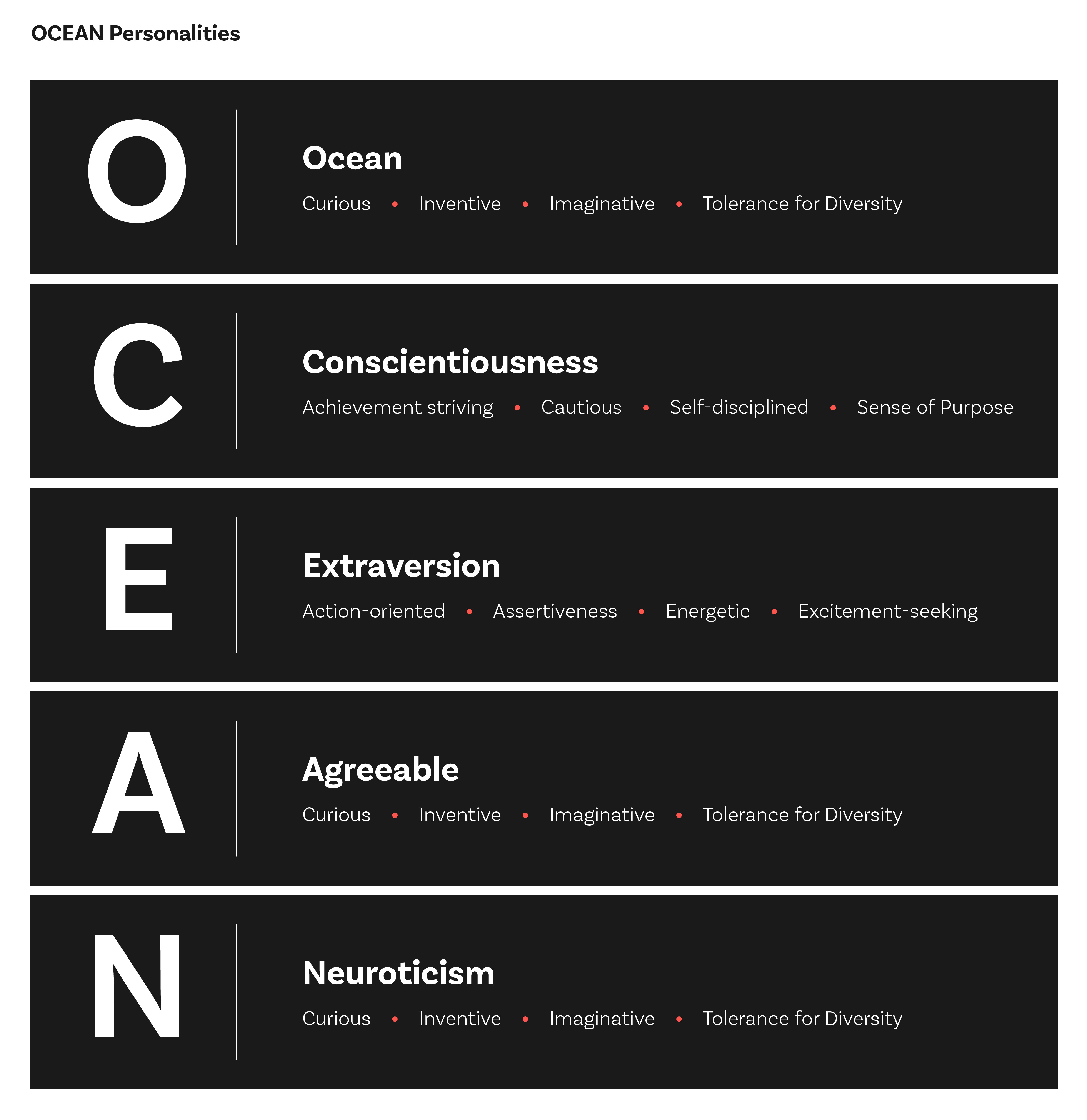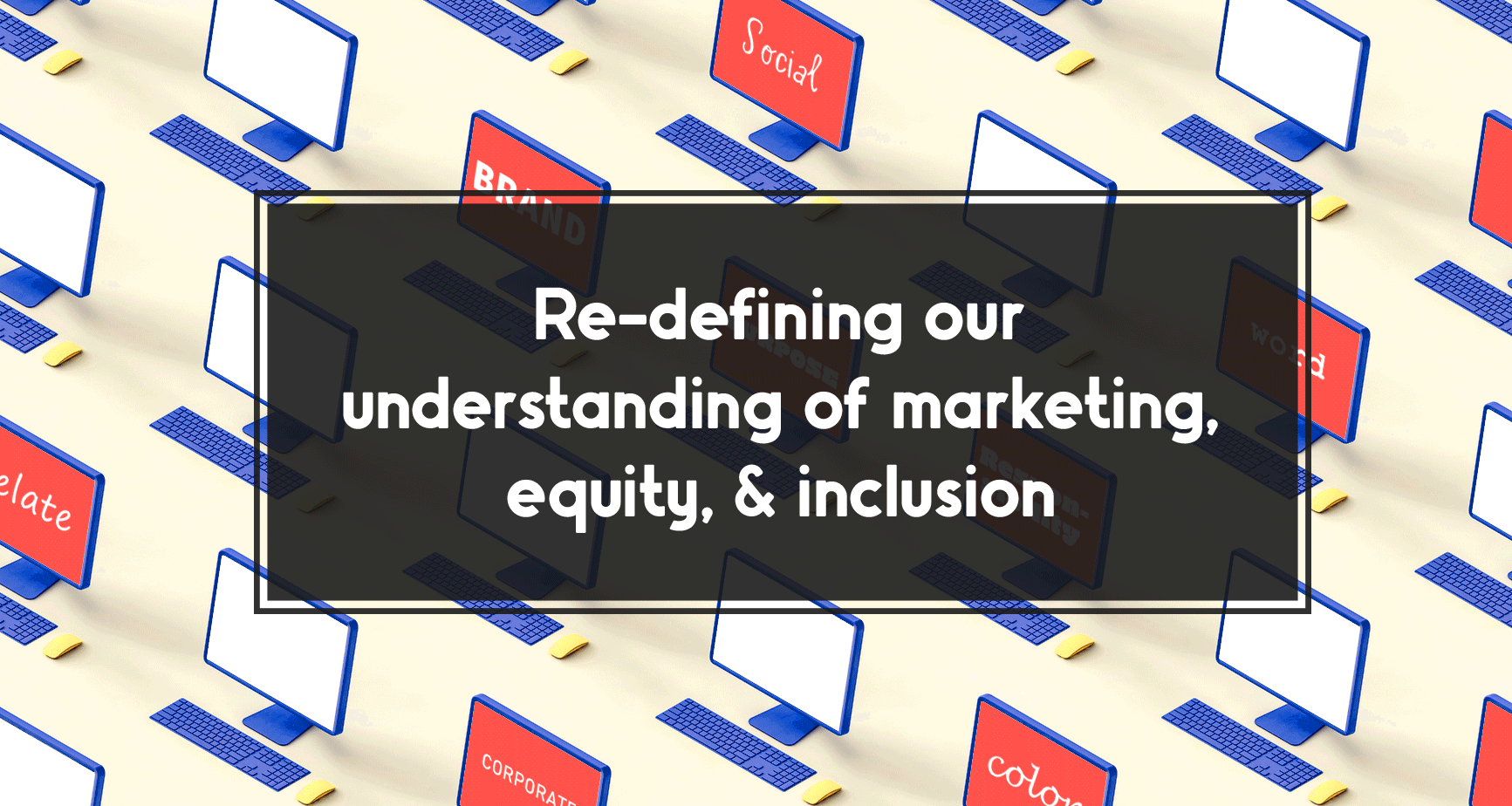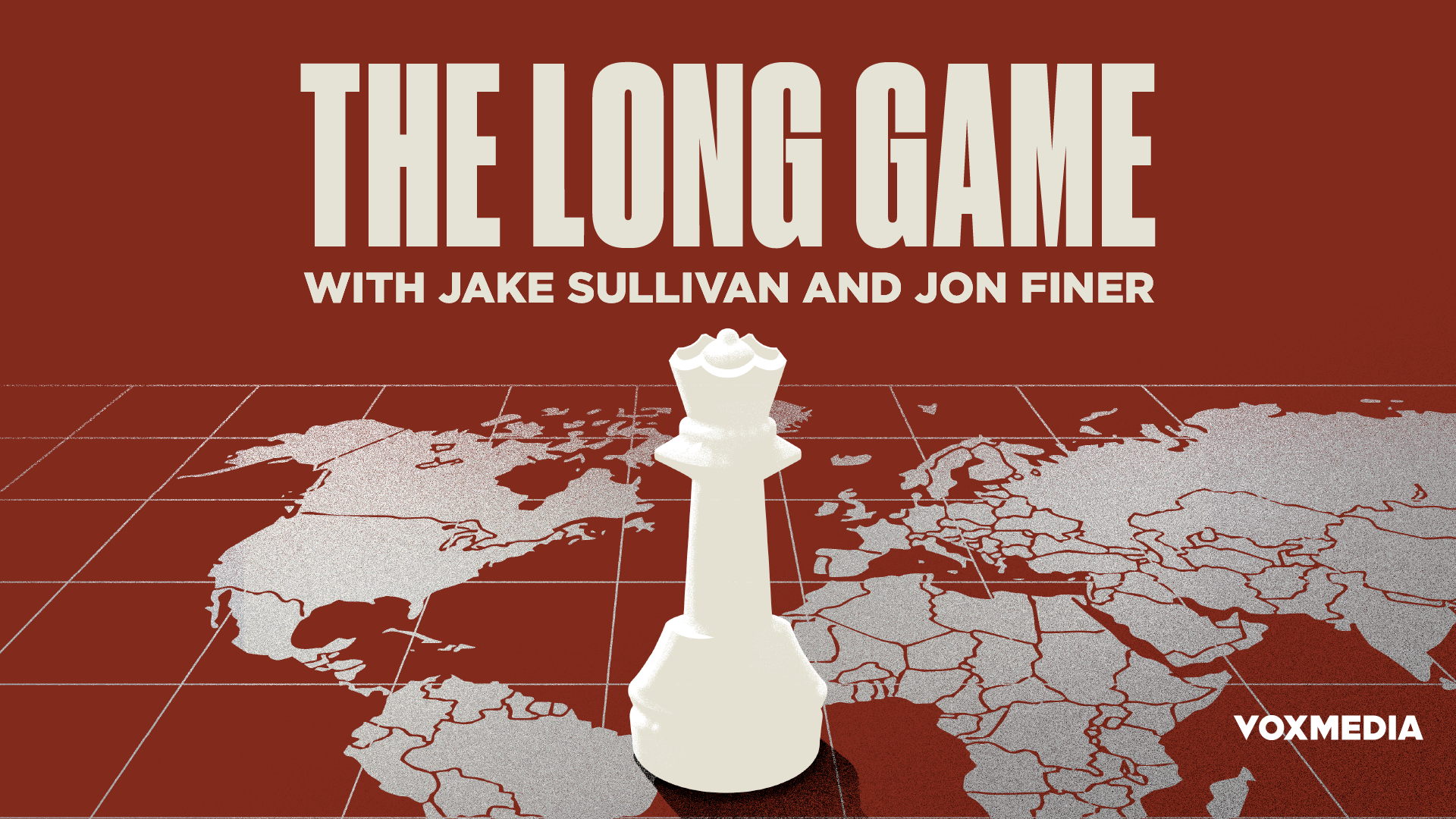When a company says they’re committed to brand purpose or corporate social responsibility, what comes to mind? Do you associate these terms with concrete actions, or are they just marketing buzzwords like “green” or “clean?” Are you more willing to support a company if they claim to care about corporate social responsibility?
Modern consumers are constantly defining and redefining themselves based on cultural and societal factors, changing perceptions of identity, and demographic shifts. In the past few years, as we have all grappled with unavoidable macro forces including a global pandemic, the accelerating effects of climate change, and systemic inequality, many brands have decided to participate in the conversation with their own declarations of and commitments to social responsibility and positive action.
Today’s consumers have more choice than ever before, and more access to information to inform their purchasing decisions. Whereas a mere 25 years ago consumers received all of their information about brands via one-way channels — aka, direct advertising — any person can now proactively track everything from a company’s supply chain to their charitable donations to their PR missteps. As we discovered via previous research building audience trust is equally important as doing the “right thing,” brands can only achieve authentic connection by meeting consumers exactly where they are in terms of mindset, emotional state, and identity.
To help marketers find expressions of corporate social responsibility and brand purpose that are authentic to their brands and most likely to resonate with today’s consumers, Vox Media partnered with the Axis Agency and BRANDthrō to answer three questions:
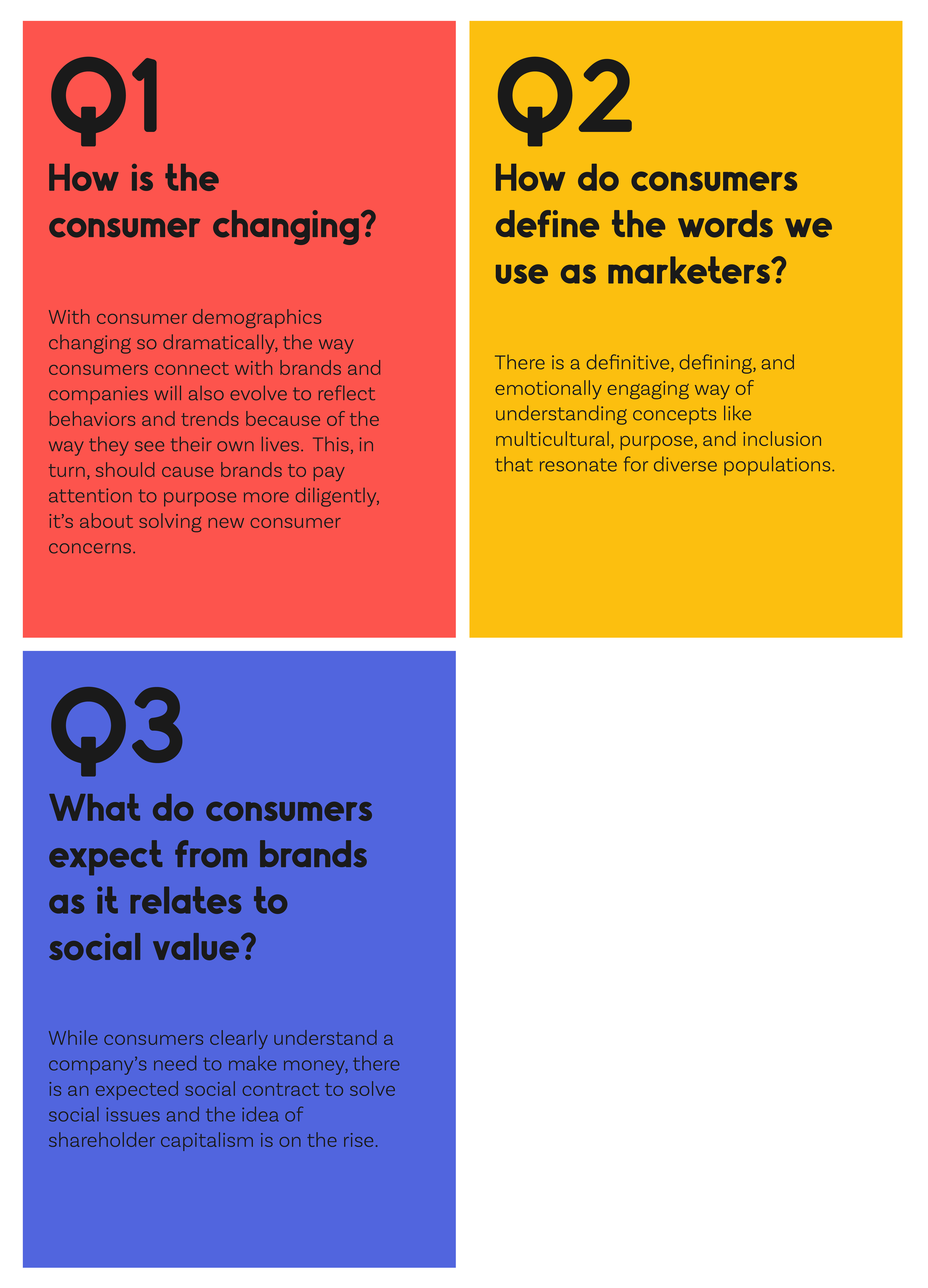
A NEW WAY TO DO RESEARCH. BRANDthrō’s ADVANCED RESEARCH METHODS
Before jumping to the results, it’s important to understand why we elected to work with BRANDthrō.
Part of this analysis is based on the OCEAN personality model (see appendix) that has been written about extensively by leading psychologists to help explain how we feel and why we behave in certain ways. Essentially, the OCEAN model assigns categories to people based on behavioral and personality traits, which results in a more nuanced view of their actions.
We can see the benefit of the OCEAN model in the analysis of a basic survey question:
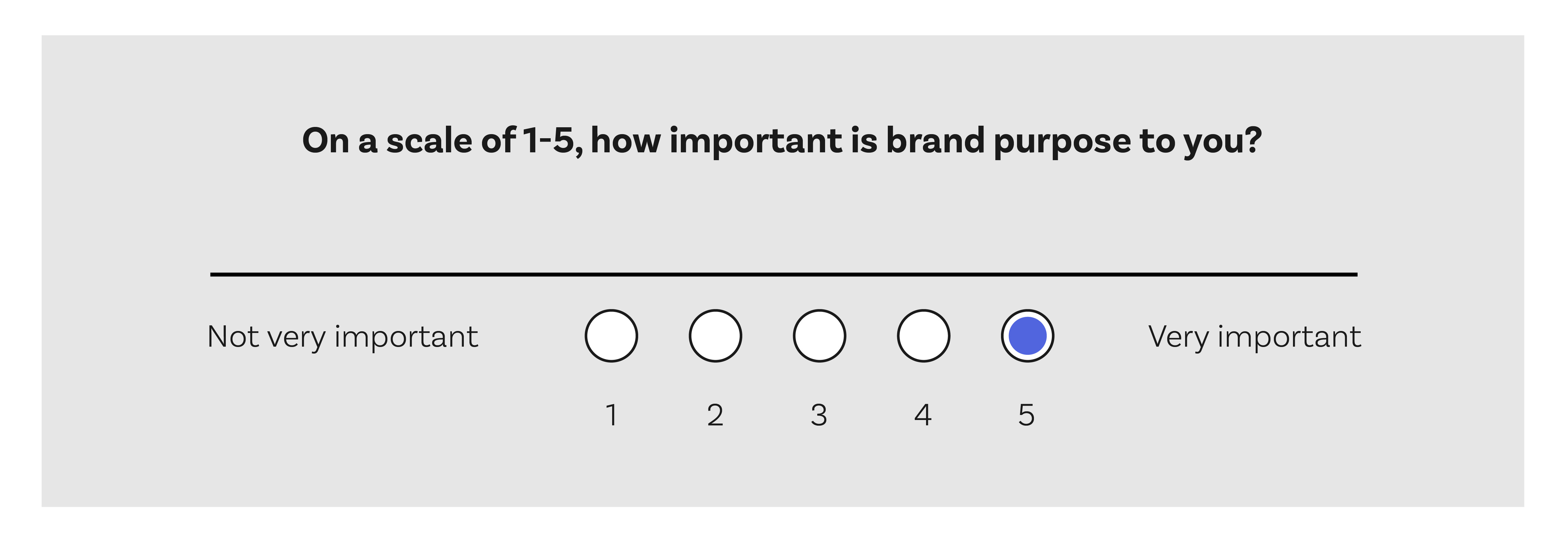
The OCEAN model and BRANDthrō look beyond the face value of this response, examining and categorizing the underlying emotions and personality traits that cause a person to say that brand purpose is very important to them. By using what BRANDthro calls emotional lookalikes, brands can reach new customers by targeting people who are likely to be interested in their business because they share similar emotional characteristics to existing customers.
So, how is the consumer changing?
- Dramatic demographic changes — by race, age, gender identity, sexual orientation, disability status, and more — are altering the way in which people connect with brands, and also changing companies from within. The role of brand purpose will only become more important as the population changes.
- There is a definitive and emotionally engaging way of understanding concepts like multicultural, purpose, and inclusion that resonate for diverse populations.
- While consumers clearly understand a company’s need to make money, there is an expected social contract to address social issues and add social value.
CONSUMERS’ DEMOGRAPHICS ARE CHANGING, AND WITH THAT COMES CHANGES IN OVERALL CONSUMER MINDSET, SENTIMENT, AND EXPECTATIONS
Earlier this year at the ANA Masters conference, Mark Pritchard declared:
“It’s high time to retire the archaic term general market. ‘General’ is only two letters different from ‘generic.’ And our job is to be distinctive. Not generic, not average, not homogenous.”
Shifting mindsets, even about what constitutes a “general market,” are evident in the way that consumers define their own identities. According to the 2020 US Census, more Americans than ever before self-identified as multiracial, an increase of 129% over the last decade. Yet many companies still target consumers by specific races and ethnicities leaving out cultural relevance or nuance. Savvier consumers with a more evolved view of their own identities expect more than gratuitous and simplistic campaigns without true representation and equity as the driving force.
Demographically speaking, the US will become a minority-majority in less than a decade. What are the implications of that new reality? Are we to start creating ads that “speak” to every unique demographic group? Do we create segmentations based on what you look like? What is the role of DEI+ in marketing now?
Next-gen marketing strategies require much more nuance around cultural relevance. For example, inclusion does not guarantee that we deliver cultural relevance, and the aim is not to have one or the other, but both.
If you believe the minority-majority is becoming a greater proportion of your audience, it’s not just the sheer size and numbers, but contextualizing the emotional mindset and delivering on the specific expectations of multicultural and diverse consumers that require cultural relevance, representation, and positive social impact on their communities.
PURPOSE DRIVEN & OVERLY STRESSED
We compared those who self-selected as culturally diverse versus the general market (non-Hispanic white) population, and the results demonstrated that a more diverse audience exhibited a different emotional profile. When compared to those who self-defined as Caucasian, those who indicated they were culturally diverse had corresponding increases in the following OCEAN characteristics: conscientiousness, agreeableness, and anxiety.
Generally speaking, culturally diverse respondents expressed a greater sense of purpose/discipline coupled with anger/anxiety/depression.
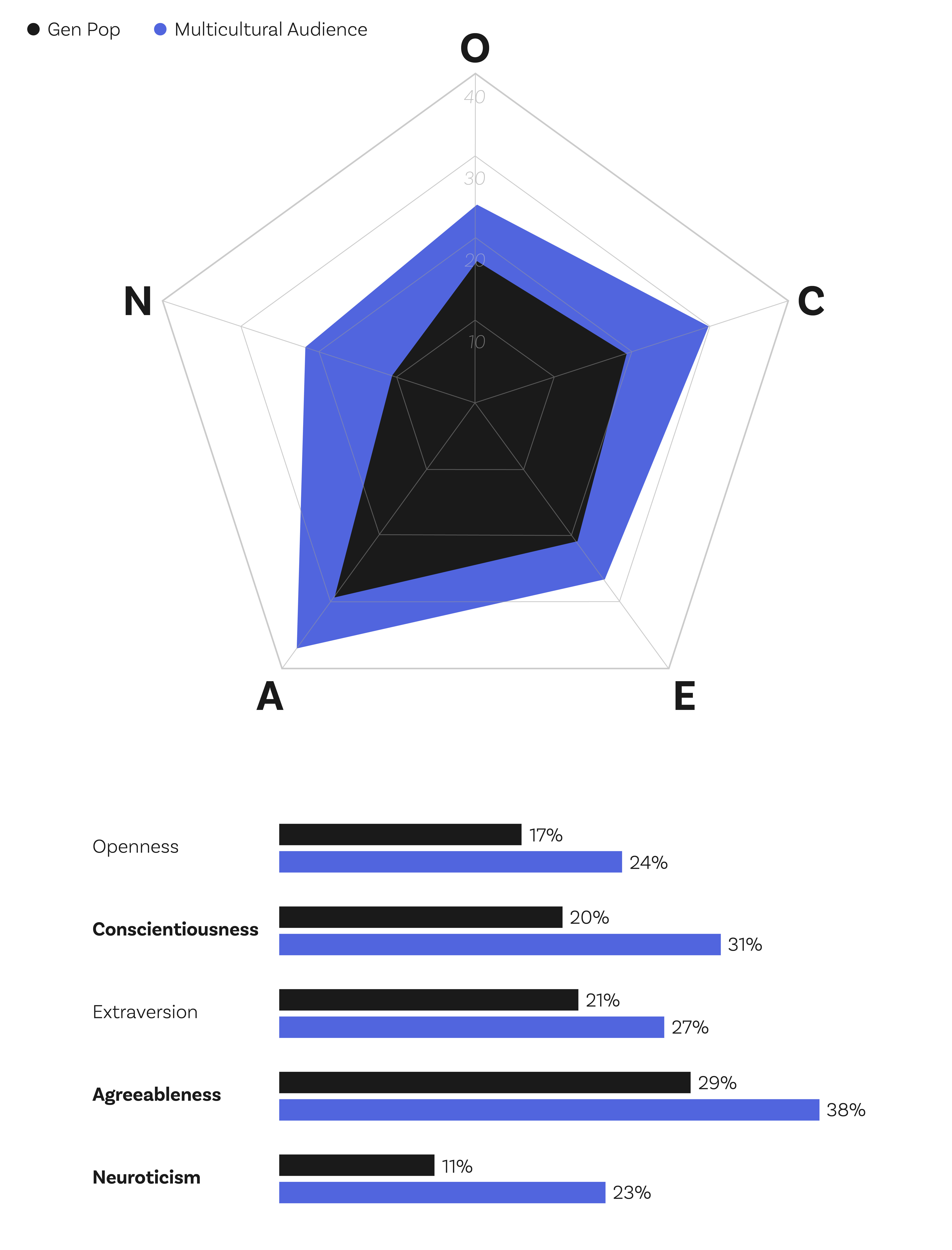
This finding is hardly surprising given the tumultuous backdrop of the last several years, with an uptick in race-motivated crimes straining Asian, Black, Latinx, and other communities. It is reasonable to think that contemporary social issues have a great impact on multicultural and diverse communities. Thus, for brands to genuinely serve diverse audiences, they must recognize the different mindsets, priorities, and emotional states that these consumers bring to the table.
HOW THESE CONSUMERS SEE THE DEFINITION TO COMPLICATED CONCEPTS
We also looked into clearly and descriptively understanding three specific concepts:

Understanding how a consumer emotionally engages with and defines these specific concepts is important to the way we construct communications, programs, and marketing efforts when we use these words for our own strategies.
For each term, we showcased a plethora of words and concepts to help us zero in on a common definition. Here’s one example of the analysis conducted around multicultural:
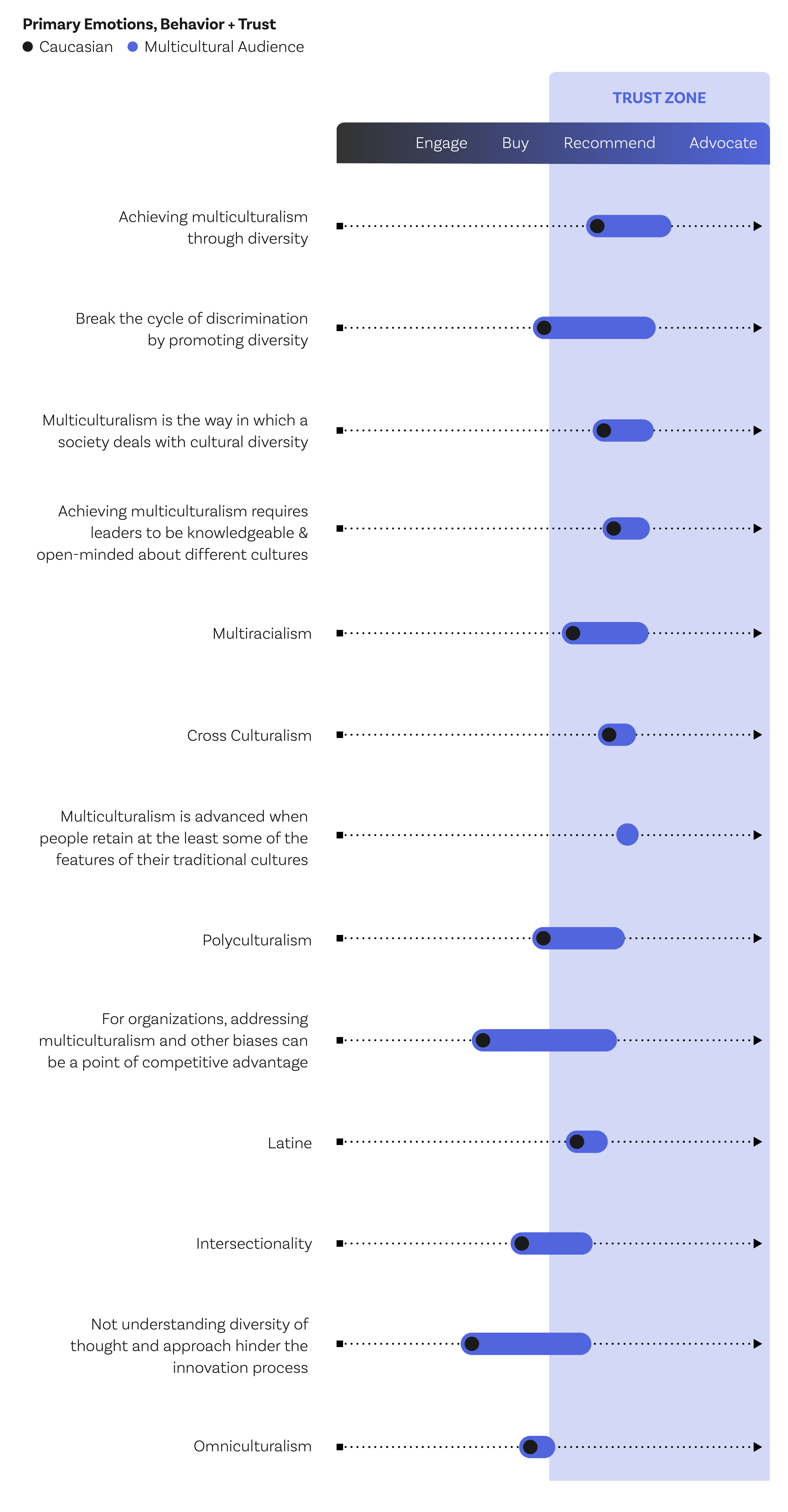
DEFINING MULTICULTURAL
We discovered that most people do not want to be targeted by racial and ethnic demographics alone. In 2023, traditional notions of race, nationality, and culture have a chance to evolve towards authentic visibility, multiracialism, and a commitment by brands to act and make positive change that impacts individuals and communities in the ways they feel matters most.
The research showed that consumers have a real desire for brands to embrace the full spectrum of cultural diversity. In fact, younger generations (Millennials and younger) believe that multiculturalism is best achieved when society has increased diversity through the coexistence and celebration of different cultures in an organic two-way exchange. Furthermore, they embrace the notion that multiculturalism requires leaders to be knowledgeable and open-minded about different cultures to gain a better understanding of different backgrounds.
The concepts that emotionally resonated the most with people were as follows:
- Brands encouraging or representing the harmonious coexistence of different cultures and people retaining features of their traditional cultures.
- Leaders being knowledgeable and open-minded about different cultures to find a way to highlight and celebrate them with intention.
- Consumers feeling properly culturally identified when they are shopping for a car or other high-price point item, or they will actually not purchase.
These findings indicate that true multiculturalism is not about superficial demonstrations in campaigns like casting, but rather the way that brands celebrate individual cultures authentically and contribute to creating a more harmonious and representative society.
DEFINING BRAND PURPOSE
In a similar fashion, when looking at brand purpose, we conflate purpose with social impact, stakeholder capitalism, brand justice, and intersectionality. All of these are important terms that obviously overlap with each other. But consumers are well aware that it’s business first, mixed with an eye towards positive impact. They seemed to respond that purpose is:
- The reason your company exists above ALL ELSE; be transparent and honest about why you exist to make money.
- BUT, in addition, recognize and strive toward a higher purpose that addresses at least one social injustice or challenge.
For diverse cohorts, purpose has an extra emphasis around how capitalism should not just serve the customer but suppliers, employees, and local communities — aka, stakeholder capitalism. Brand purpose means economically benefiting the entire ecosystem financially, not just the company or shareholders.
DEFINING INCLUSION
Moving to inclusion, we dissected the term into the following prongs around health, finance, tech, or racial equity. Not surprisingly, after three years of a global pandemic, the issue most on the minds of consumers today is health equity.
- More specifically, every person can attain their full health potential, like equal rights for women.
- Access to services to help with both physical and mental well-being
- Equity of health services regardless of financial means
For those who identify as diverse, the concept of health equity was of the greatest importance, while financial inclusion was a close second. For white-identifying consumers, equity around finances was of greater importance. Rather than stating that your company stands for equity and inclusion, create programs that deliver health, wellness, and financial inclusion for the actual customers you serve.
WHAT IS THEIR EXPECTATION FROM BRANDS?
Equipped with the definition of multicultural, purpose, and inclusion, we move to the actual expectations that consumers have from brands directly. Those differences are significantly more dramatic when comparing diverse consumers versus self-identified Caucasians with regard to climate change, economic opportunity, and fair treatment of employees. On nearly every single issue, diverse consumers are asking more of brands in exchange for their love, trust, and continued support.

We also asked consumers to identify the issues they are interested in having brands address, and found that multicultural audiences are consistently more passionate about brands that care about hunger, mental health, and respect for identity.

All this is to say, regardless of whether you measure the intrinsic emotion and connection of brand expectation or you outright ask a consumer, diverse consumers are going to care that you do more for society in general.
THE ROLE OF MEDIA
Ultimately, when consumers are asked where they think it’s most important to self-identify from a cultural perspective, occasions include everyday opportunities to celebrate identity (like holidays and traditions), media context, and where they work.
- Cultural Celebrations / Traditions / Food
- Entertainment: film, TV, music
- Workplace

Essentially, they want to see places, spaces, and content outlets where they engage regularly to show the greatest reflection of themselves.
Our intentional approach to content ensures that inclusion also delivers relevance. Here are a few examples that highlight our editorial approach:
POPSUGAR
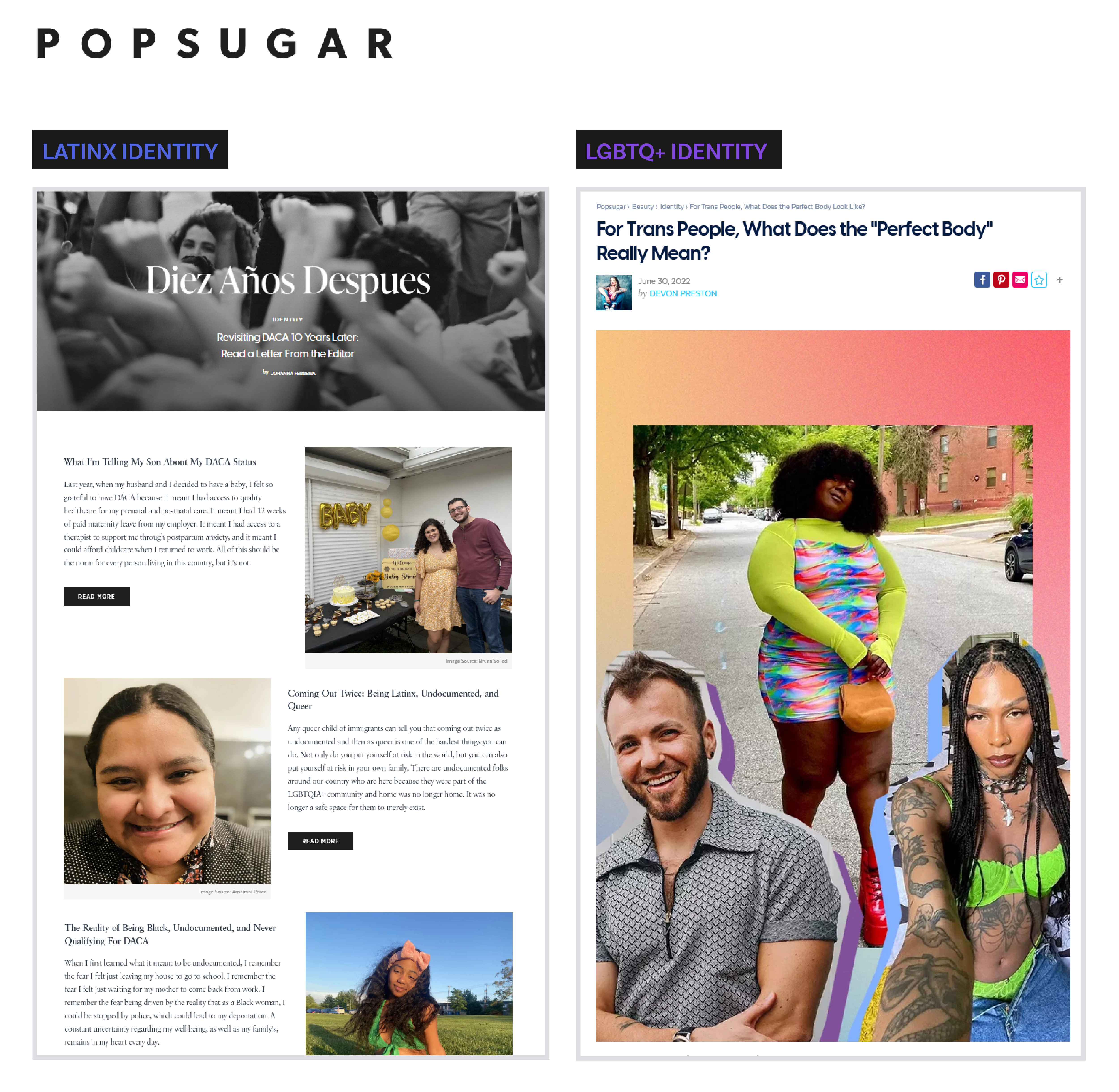
Thrillist
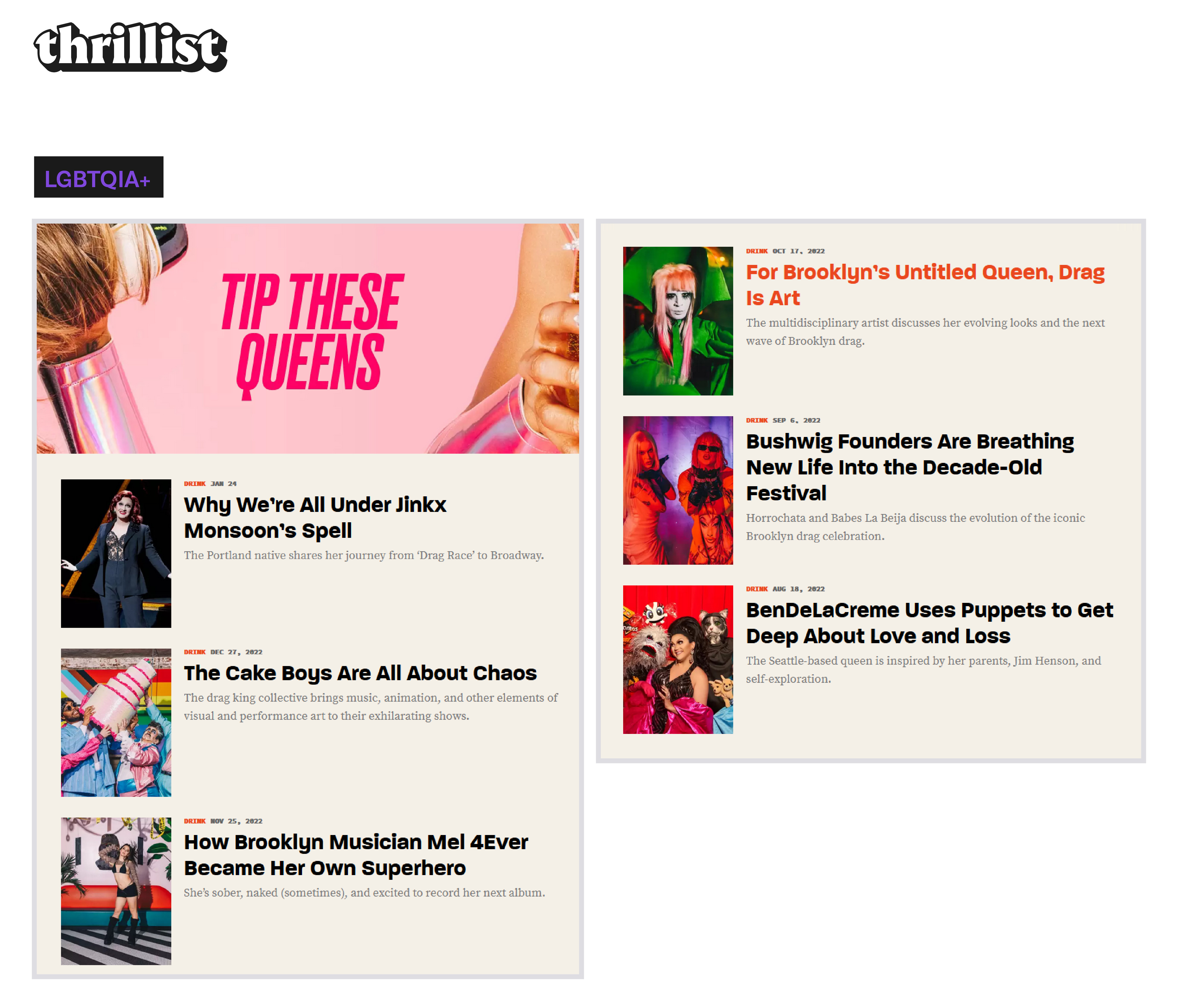
NowThis
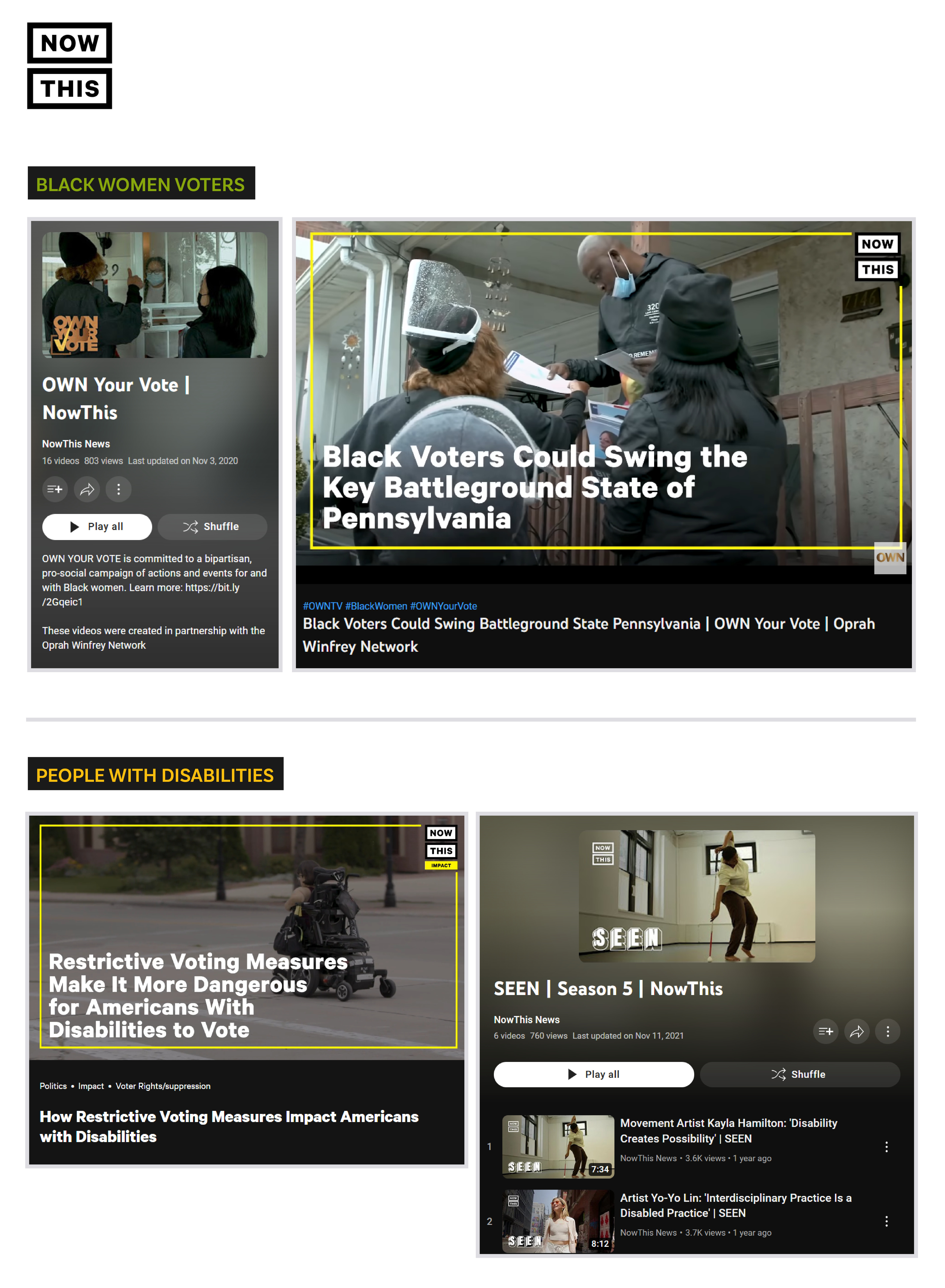
- OWN Your Vote, 2020 in partnership with OWN focused on issues concerning Black voters across the U.S.
- How restrictive voting measures impact Amerians with disabilities; SEEN: Artists Share Experiences with Disabilities
Vox
- Asian identity series (several stories in this feed!)
- A Black rodeo rewrites the story of the West; Freedom, Georgia is a utopian vision for Black life in America; How Black Martha’s Vineyard became a summer oasis; What we owe and are owed; How the “Black tax” affects my family;
The question becomes where brands are willing and able to show up, which is important because 40% of diverse consumers would be willing to switch to a brand that demonstrates an understanding of how they self-identify culturally.
The data shows that brands standing up around issues of importance to the audience can make a nearly 50% impact in acquiring new customers. This is a significant finding and exploring ideas of how to bring this thinking to life in other ways that fall outside the boundaries of straight advertising and media would absolutely be of value. Some points to remember:
- Identity today is about cultural fluidity. This fluidity is changing the way the consumer sees themselves and likely relates to companies and brands.
- This work has brought strong clarity and definition to concepts like multiculturalism, purpose, and inclusion. Our next step is to build around these definitions.
- If you don’t make an effort to understand your consumers’ emotional states while building experiences for them, you risk failing to earn their advocacy, loyalty, and trust.
The new construct of consumer connection predicated on improved emotional understanding will be more important to the longevity of your brand than anything else. Brands that embrace data-backed approaches with more agile emotional intelligence will be better positioned to attract, retain, and differentiate themselves from the competition.
From celebrating LGBTQ+ athletes on SB Nation to amplifying stories in honor of Black History Month on Popsugar (and so much more), Vox Media will always prioritize visibility and representation; we take great pride in celebrating cultural identity as being central to our audiences’ engagement with our brands.
APPENDIX:
BRANDthrō’s survey methodology gauges the emotional intensity that respondents feel about different component parts of a brand experience, and their likelihood to take action when they are most emotionally engaged. They also allow respondents to select as many primary and secondary emotions as they want for each piece of brand stimuli. Each piece of stimuli is emotionally scored to predict how consumers will behave, and whether you have engendered or breached someone’s trust. The methodology lends brands the same type of emotional intelligence people use every day, including the ability to identify and predict what makes different individuals feel one way or another and to tailor one’s behavior accordingly.
By precisely scoring emotion using AI, data science, neuroscience, and machine learning, we were able to understand how people feel and thereby gain understanding into how to directly address their desires and concerns with an eye toward engendering brand love, trust, and loyalty.
